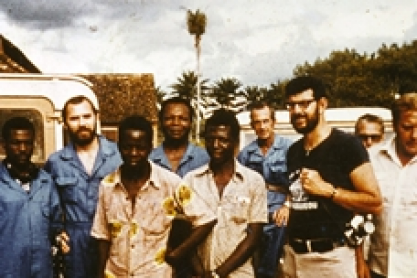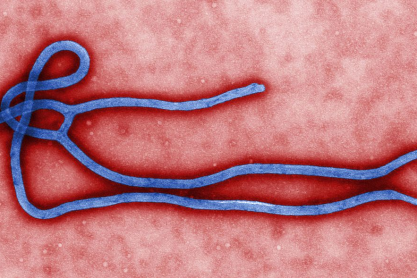Ebola was first discovered in 1976, with two simultaneous outbreaks in Nzara (Sudan), and Yambuku (DR Congo). At the time of the outbreak, the disease was unknown and many were taken ill by this mysterious illness.
In that same year, a young Belgian scientist named Peter Piot was a medical school graduate training as a clinical microbiologist at the Institute of Tropical Medicine in Antwerp. One day he received a blood sample sent by a doctor who was working in Zaire (now known as Democratic Republican of Congo). The blood sample was that of a nun who had fallen ill in Zaire and help was needed in identifying the cause.
When tests were carried out on the blood sample, Piot and his colleagues discovered something very unexpected; Piot described what they saw as “a gigantic worm like structure-gigantic by vial standards. A very unusual shape for a virus.”
As the virus spread through villages in Zaire and began claiming lives, Piot went to Africa to find out more about the illness. After visiting different villages in Zaire, Piot and his team ended up in Yambuku.
They discovered how the virus was spreading by looking into how the epidemic evolved, mapping out infections, and who the main targets of infection were. Transmission occurred through direct contact with infected people, reusing syringe needles in clinics, and also from contact with the bodies of people who had died from the virus.
Using methods including quarantine and teaching communities about the different measures to prevent the virus from spreading, the epidemic was finally brought to an end. The team of scientists named the virus after a river called the Ebola River, which was located close to the Yambuku village. The mysterious illness that claimed nearly 300 lives is now known to be caused by the Ebola virus.
Ebola virus has five distinct species recognised as the following: Bundibugyo ebolavirus (BDBV), Zaire ebolavirus (EBOV), Reston ebolavirus (RESTV), Sudan ebolavirus (SUDV), and Taï Forest ebolavirus (TAFV). EBOV is the most dangerous of the five species.
The virus has been found to have an incubation period of 2-12 days. Infection begins with the sudden onset of fever, headache, sore throat, and muscle pain. This stage is then followed by diarrhoea, vomiting, rash, impaired kidney and liver function. In some cases there is also a bleeding phase, with internal and external bleeding.
Patients will have low white blood cells and platelet counts as well as a rise in liver enzymes. Infection continues as long as the virus in contained in the bloodstream and secretions.
The virus works by targeting endothelial cells, phagocytes, and hepatocytes. EBV basically works to cause excessive tissue damage and attack the immune system which can lead to fatal cases.
As of February 2015, there is no proven treatment available for EVD. However, blood products, immune therapies and drug therapies are being evaluated as potential forms of treatment. No licensed vaccines are available, but two potential vaccines are being test for safety on humans.
This profile was written by a Biology: Changing the World volunteer.





